I recently acquired the newest model of the Variocage, one of the very few, if not the only, crash tested dog transportation options available. Until just about a year or so ago, Variocages had to be imported from Europe, but now they are available through several online retailers in the US: 4×4 North America, Clean Run, and Mighty Mite Dog Gear.
The Variocage has been crash tested in Europe at 50km/h with a 45kg canine “dummyâ€. It is designed to absorb forces in a rear-end accident through the use of telescoping panels and bars that form the Variocage’s own “crumple zone†while still maintaining structural integrity. Crash test video can be seen here: http://www.youtube.com/watch?feature=player_embedded&v=9uPeMliuxbY
I purchased my Variocage from 4×4 North America (4x4northamerica.com). And, just for my readers and facebook fans, you can receive a 10% discount by using the code Menapode (including the capital M) at checkout on the 4×4 North America site.
Now, onto the details!
The photo above is of the Double XX Large Variocage in my 2011 RAV4. This is the largest size they make and the dimensions as it is currently assembled are: 41.73″ wide, 37″ deep, and 28.14″ tall. The width and height are fixed, but the depth is adjustable from 31.89″ to 40.55″. This size weighs approximately 85lbs.
With the current length and the slope of the back side of the Variocage, I can still use my back seats comfortably, unlike with the 36″ SUV crates I was using previously that required the seat backs to be set at an uncomfortable position. I have about an inch of clearance on each side of the Variocage currently, so there is some shifting after moving the vehicle, but that could be easily remedied with the tie down straps included with the Variocage.
I’m not 100% sure that I could slide the Variocage out of my vehicle fully assembled, but I was able to do so when it was half-assembled during the initial install. The primary issue for my vehicle is the hatch itself, NOT the hatch opening. The Variocage is also quite heavy, so I installed it knowing that I would not be taking it in and out of my vehicle frequently.
I have also installed the provided divider for my Variocage as I need to transport multiple dogs. This divider is solid and installed with several screws – it does not just slide in and out as some dog box dividers I’ve seen in the past. There is a small lip on the bottom of the divider that would not be comfortable for a dog to step on, but a bathmat in the Variocage makes that a non-issue. With the divider installed, each side is approximately 19″ wide, with the depth dependent on the overall Variocage’s adjustment.
I received the Variocage partially unassembled. Assembly was mostly a matter of putting larger pieces together – you don’t just get a box full of bars and metal, but rather full sides and doors that need to be mounted to a frame. I decided to assemble the Variocage in my vehicle since I was unsure whether it would fit past the hatch fully assembled. The manufacturer warns against this, but my 5’1″ self was able to do it alone and with a minimum of annoyance in about 2 hours, including the complete removal of the half assembled Variocage *twice* when I thought I had it in backward, corrected it, and then realized that it had been sitting correctly the first time!
The most frustrating part of the whole assembly process was keeping everything aligned while I screwed things together – a second person would have been VERY helpful at that point. All parts and tools were provided with the Variocage itself. The instructions are visual, which was a bit confusing at times, but the assembly video on the 4×4 North America website proved useful for clarification.
The Variocage did also come with a rubber mat cut to fit the bottom that I chose not to use since one of my dogs is a crate digger and I wanted her half of the Variocage empty. We use bathmats on one side and a towel on her half now.
After using the Variocage for about 2 months, I can say that I’m VERY happy with the design, durability, and overall ease of use in addition to knowing that my dogs are in the safest crate option available.
Design
The crate has a slight slant to the front and a more extensive one in the back to accommodate seat backs. This makes fitting it in a vehicle much more pleasant that square crates.
The Variocage is NOT designed to be free floating in a vehicle – having it resting behind a seat is integral to the safety features, and the crate will not deform the back of a seat it rests against at tested speeds.
The slant does make the Variocage look much smaller than it actually is – my 40lb dogs both fit with plenty of room to spare and I can comfortably crate my two smaller dogs (33lbs and 24lbs) together in one side.
The bar spacing on the front and sides depends on the size of Variocage purchased. On mine, the spacing is wide, but none of my dogs are at risk of getting a head stuck as the spacing is not that wide.
The back panel is a grid instead of bars now and includes an “escape hatch†in case the rear door is unusable after an accident. This escape hatch is not designed for regular use as a door – it is a bit unwieldy to open and a whole panel is removed to function as the “doorâ€.
The bottom tray is two pieces of metal that slide to adjust for the desired depth of the Variocage. They sit flush to each other and I have no worries about toes or fur being caught while in use. The edges of the tray slope up, containing hair, spilled water from bowls, sand, etc. nicely.
During use, the Variocage does occasionally have some rattle, but less than the SUV crates did, and certainly much less than the airline or wire crates I’ve set on my back seat before.
Durability
The Variocage is made up of metal panels and bars with metal screws. The only plastic is on the end caps for the bars and the knobs for the escape hatch and adjustment points. This is a substantial crate and I know I will have it for many, many years to come.
My malinois is a crate digger. She digs each time she’s put into the vehicle, so the tray has taken a lot of abuse from her – there are visible discolorations in the finish, but the surface of the tray is still smooth. In fact, because there is so little give in the metal tray, her digging has lessened because it’s not nearly as much fun as in a crate with a plastic tray!
I’ve not had to adjust any parts of the Variocage since installation – everything has stayed just where I left it, despite many miles on the road and many hours containing dogs!
Ease of Use
Nothing is difficult about using the Variocage. The doors have latches that can’t be reached by dogs, the doors have hydraulic bars to hold them open and make closing super simple (I have closed them with an elbow several times!), and the lip on the bottom is low, so my dogs have never had an issue getting in or out, even at high speeds!
The Variocage even has individually locking doors, so that I can secure my dogs yet still leave my hatch open for ventilation and the side bars hold my crate water buckets perfectly!
Each door has a small space for paperwork that works marvelously for my In Case of Emergency packets, too!
I would highly recommend the Variocage for anyone looking for a safe way to carry dogs in the back of a vehicle. It is not designed to be used sideways or front facing, or against other crates, which does limit its use for some, but many dog people crate their dogs in cargo areas that may or may not be crumple zones, and it is certainly well designed for that application.
The initial price IS steep, but consider that this may be the last crate you need to buy for your vehicle and the price per mile or even per year, is much more palatable, especially given the safety you will be providing your animals while traveling.
Any questions? Need more photos? Leave me a note in the comments!
When my Impreza was totaled this past summer, it moved my vehicle buying plans up about 6 months. I had been leaning toward the Kia Sorento, but didn’t want to assume that it was the best fit without test driving a few other vehicles. I hadn’t looked at Toyotas in person for several years, so I made the trip to the local dealership to put my hands on a few models, primarily with the idea of “ruling out†the RAV4 – I was sure it would be too small. Well, my visit ended up ruling it IN instead, and after lots of research, I ended up purchasing a 2011 RAV4 as my next vehicle!
The RAV4 is one of the most versatile smaller SUVs I’ve run into, and one of the VERY few small and midsize SUVs I’ve looked at that have enough space to fit two 36″ SUV crates side by side in the back while still allowing a second row seat to be left in place. It’s a Toyota, so reliability should be good, and while I have the base model, there are still lots of nice features included. Let’s look a bit more deeply, though:
Width between wheel wells (narrowest part of the vehicle): 43″
Width at folded second row (widest part of the vehicle): 49″
Cargo depth with both rows up: 43″ on the floor, 36″ deep at the narrowest point (seat back/hatch 26″ above floor level) both with second row moved forward but still functional.
Cargo depth with the second row down: 71″
Interior Height: 38.5″ at second row (max) to 35″ at the seatbelt “bump†in the cargo area (min)
Hatch dimensions: 35-38″ tall, 41-44.5″ wide.
MPG city: 21 mpg (4WD model, 4 cyl engine)
MPG highway: 27 mpg (4WD model, 4 cyl engine)
Note: With mixed driving, I’m averaging 25-26 mpg on a daily basis.
In addition to the nice dimensions and decent gas mileage for a 4WD vehicle, the RAV4 also boasts two *very* nice features:
- Newer models are designed to accommodate an optional 3rd row of seating, which means the crumple zone in the rear of the vehicle is designed to protect potential passengers in the “cargo†area behind the second row. Great news for those of us who must crate our dogs in the back!
- The second row actually slides forward about 5″ and the recline of the rear seats is adjustable! These extra inches of “wiggle room†are what allows us to fit two 36″ SUV crates side by side in the back without folding seats down. When moved fully forward and adjusted almost straight, the rear seat isn’t the most comfortable ride for adult humans, but it *is* useable for short trips and the rear seat will act as a barrier to stop crates from sliding in a sudden stop situation.
With a custom crate or Variocage that has a slanted back, you can move the seats back to a more comfortable position and yet still retain enough floor space for even large crates.
The two features above are what really started to sway me toward this vehicle over the Sorento, but the 4 tie down points, an extra power outlet in the back, remote lowering rear seats, an easily accessible spare (mounted on the rear hatch), and lighting in the hatch itself, are additional icing on the RAV4 cake.
The RAV4 is not without its faults however: Unlike several SUVs in the same size range, the RAV4 does *not* have an independently opening rear hatch window and the rear hatch opens to the side instead of overhead. The rear glass isn’t a huge issue to me, but the rear hatch opening did give me pause.
In practice, the side opening hatch doesn’t seem to cause many issues, but you do lose the overhead protection from rain/sun that regular hatches provide and you have to be more careful about leaving your hatch open while parked at a trial – I pull forward a bit more to allow the hatch to remain open without jutting into the lane of travel. On a slope, the hatch does need to be firmly pushed open, but the mechanism that holds it open generally keeps it where I want it once it’s in place.
Overall, the RAV4 stands out among other small to mid-size SUVs on almost all counts, especially interior dimensions and fuel efficiency. It’s a great vehicle for people with multiple medium-sized dogs and can accommodate larger crates than one might expect, all while providing some unique and much appreciated features.
A while back, one of my online dog friends mentioned that she had stumbled upon a great way to keep her van cleaner and looking nicer longer on the cheap: indoor/outdoor carpet cut to fit!
With a new Variocage set up on the way for my RAV, I decided to give it a try. I bought a 6×8′ indoor/outdoor carpet roll at Costco – charcoal grey to match my interior – and set about measuring the RAV to determine the basic dimensions I would need. For the RAV, this meant I cut a section 71″x50″. Box cutters seem perfect for the job, though I recommend cutting on the non-fuzzy side of the carpet as it is easier to get a straight, clean cut that way.
Once the initial cuts had been made, I folded all the rear seats down, laid the carpeting in the back of the vehicle and set about scoring and cutting around the wheel wells, hatch opening, and other miscellaneous nooks and crannies in my vehicle. I very quickly had a great looking cargo liner that is removable for cleaning:
As you might have noticed, I did end up having it shifted a bit to the left, but that was an easy fix: just slice off an inch on that side and all is balanced again!
In general, I will only be using the cargo space behind the second row seats, but I cut the carpet long enough to cover the back seats folded down for those trips where I’m taking all four dogs to trials. When the rear seats are up, the carpeting folds easily so it isn’t noticeable.
All total, I think I spent about $ 20 on the carpeting and maybe 30 minutes cutting it to fit!
After some great suggestions by friends and fellow competitors online, at events, and during classes, I’ve decided to add a new category to the blog: Helpful Hints!
This will be a category devoted to those little tips and tricks that dog people come up with to make traveling with their animals easier. I don’t anticipate that it’ll be a huge part of Four Paw Drive, but perhaps it will be useful nonetheless.
Stay tuned for the first post on DIY cargo liners!
This is the third in a series of stories shared by those who have been in accidents while traveling with their dogs. The goal of this series is to share anecdotes that may help others determine the safest travel options for animals in vehicles.
Have a story yourself? Four Paw Drive wants them all, regardless of the accident’s severity! Send them to our email address: 4pdriveblog@gmail.com.
Stories 7&8 from Ashlee
I drove an older (’97) boxy body style Jeep Cherokee. I was hit by a teen driver running a red light at approx. 45 mph. I had a second to try to avoid being hit and turned away from the oncoming car as far as I could, so he hit the driver’s side front corner of my jeep – and basically sheared off the front of the jeep from the wheel’s forward. That night I placed my 8yo 45lbs mix breed in the front seat like I always did with him, as I backed out of the driveway I had a weird feeling and stopped and put him in the back in my larger breed dog’s crate. I am so thankful that I did. The crate he was in was too big for him, by quite a bit. He was thrown into the side of the crate in the crash. His injuries consisted of basically severe whiplash with extreme neck and back pain, he didn’t sleep for 2 days, he couldn’t get comfortable in any position. Finally, a combo of pain meds, muscle relaxers and steroids started to make progress. He made a full recovery, but it took several weeks.
My second accident was also in an older boxy body style Jeep Cherokee (’00). I was rear-ended by a mini-van accelerating to get through a yellow light that I stopped for. My dogs were not in this accident. The back hatch door was caved in and unable to be opened. My crates were set up in the back of the jeep with the doors opening out to the hatch door. The crates are strapped in and set back from the hatch door by about 8 inches. The crates were undisturbed. In anticipation of an event like this I keep a set of bolt cutters that are big enough to cut open my crates tucked in between the bucket seats in the front seat, so that either the driver or passenger can access the cutters easily. I have since upgraded the wire crates to the ones that have doors on both ends, but I still keep the cutters in the car.
Story 9 – from Erin, Four Paw Drive’s blogger
In August, I was returning home from a vet visit with my foster dog, Laurel, in her wire crate in the second row of my Impreza. I stopped at a light and as the light turned green I was rear ended by an SUV who didn’t even hit the brakes. The SUV ended up deciding to make the accident a hit and run unfortunately, so I don’t have any info on how fast they were going, but it was hard enough to fling all the stuff on the front seat onto the floorboard and my foster dog into the side of her crate.
The SUV’s bumper over-rode the Impreza’s, so there was nothing between the SUV and my rear crate but the hatch. The rear crate suffered a small dent in the corner, but no other damage. Laurel and I both were fine, just slight soreness the next day, but the impact jammed my rear hatch shut and totaled my car. We were only 4 miles from home!

While my Impreza was in the shop after my accident in August, I had to get a rental. I knew it was going to be challenging to find one in my price range that would accommodate dog crates, but one of my friends told me that they had had good luck with the Versa, so I went ahead and asked for one since it was listed in the “Budget†category.
When I went to pick it up, I immediately thought my friend had made a mistake. There was no way I was going to fit two 36″ crates in this teeny car, but it’s all they had, so I figured I’d just make it work.
When I got it home and tried the crates, the car seemed to expand. It took a little finagling and a side door crate, but sure enough, I fit two 36″ crates in this tiny vehicle! Amazing!
Width between wheel wells (narrowest part of the vehicle): 39.5″
Width at the widest point: 48.5″, across the back seat
Cargo depth with all rows up: 29″ at the floor, 9″ at 25″ up.
Cargo depth with all rows down: 49″
Interior height (min): 28.5″
Interior height (max): 35.5″
Hatch dimensions: 30″ tall, 24.5″-40.75″ wide
Keep in mind that one crate just fits on the folded back seats, while the other squeezed into the cargo depression. The rear hatch was so snug to the crate that I had to pad the corners. The door on the crate in the cargo area was a “garage door†style so opened up instead of out – an outward opening door would’ve been unable to clear the rim of the hatch.
MPG city: 24-28 mpg
MPG highway: 31-34 mpg
The Versa is not a cargo vehicle, but it is pretty flexible and with a little creative thinking it can actually carry more larger crates than many other larger vehicles. It’s definitely worth a second look if you’re looking to find a vehicle with great gas mileage that will carry either small or medium breed dogs, but human passengers aren’t a concern!
Need tons of cargo room sans human passenger in a vehicle that’s easier to maneuver in traffic and on those narrow roads on the way to some obscure trial site? The Transit Connect might be for you!
The Transit Connect is a workhorse! It’s primarily marketed as a business vehicle and the interior and features certainly reflect that!
Width between wheel wells (narrowest part of the vehicle): 47.5″
Cargo depth with all rows up: NA – no passenger seating behind the driver and front passenger seats
Cargo depth: 71″
Interior height (min): 52″
Interior height (max): 54.5″
Hatch dimensions: 51″ tall, 50.5″ wide
MPG city: 21 mpg
MPG highway: 27 mpg
True to its service vehicle marketing, the Connect doesn’t come with a ton of additional bells and whistles. There are a few though: multiple lights throughout, including in the rear and in the middle of the cargo area ceiling, 12V outlet in the rear, multiple cargo tie down points, and optional second row seating or shelving is available.
Additional vents are added with second row seating, but the salesman was unable to tell me if those seats were at all easy to remove if needed.
The Connect does NOT have 4WD as an option, so it’s not suited for off roading, but otherwise it seems to be a very flexible option for those with multiple large dogs!
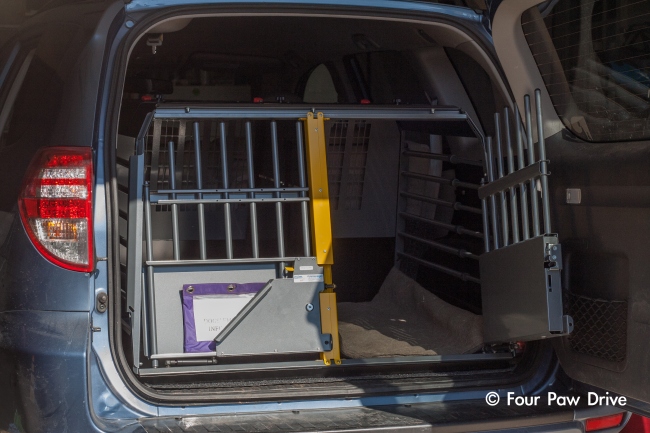
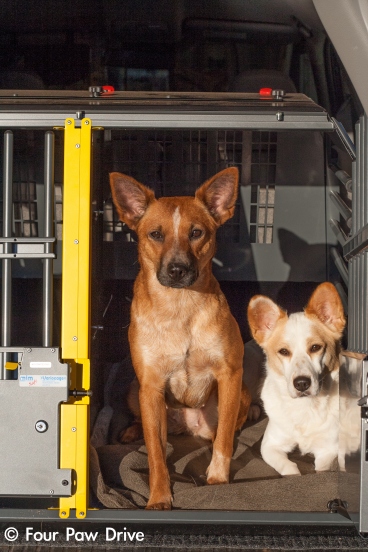
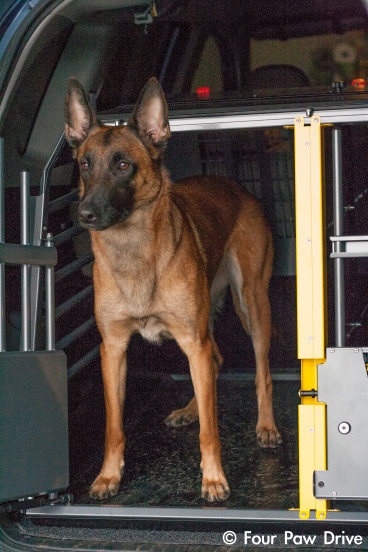
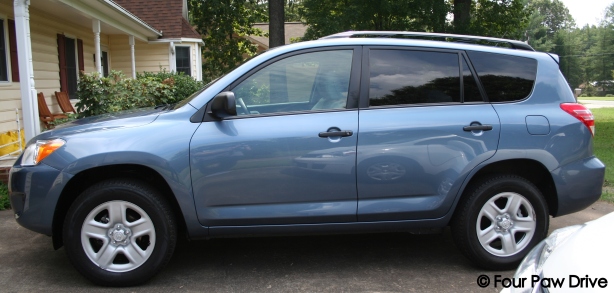
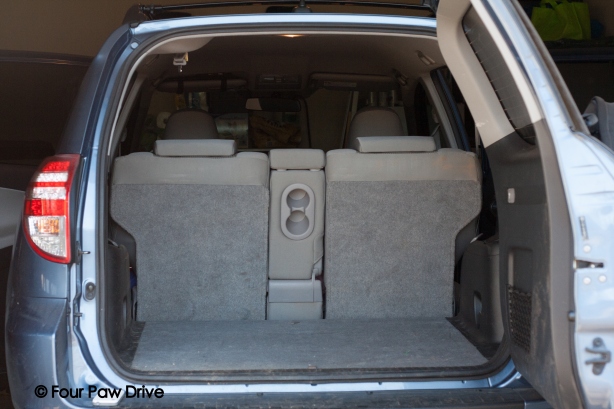
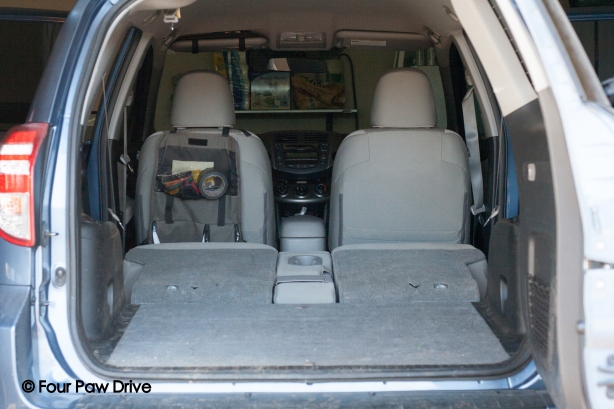
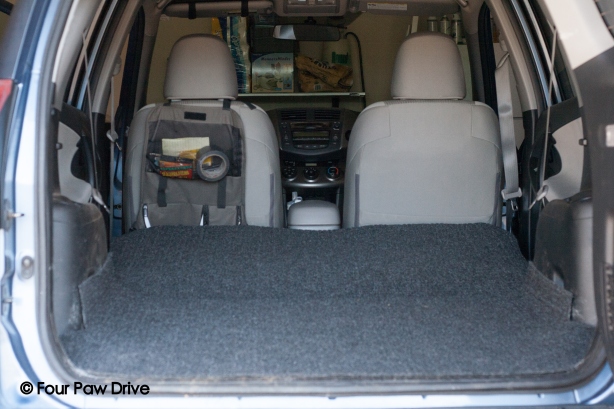
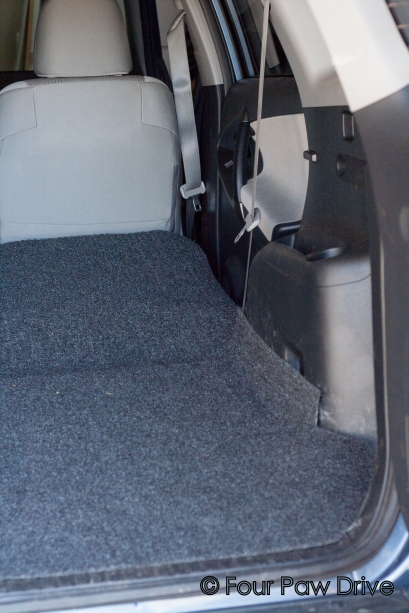
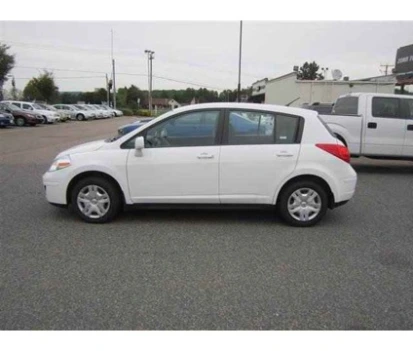
No comments:
Post a Comment